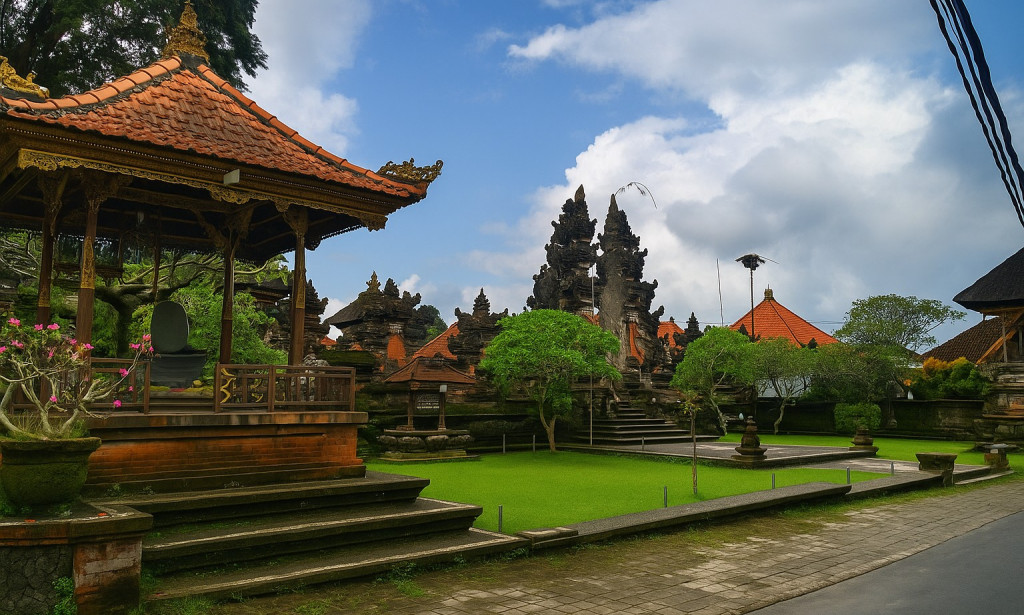Bali: The Living Tapestry of Culture, Spirituality, and Art
Description:
Discover the vibrant culture of Bali—its unique blend of spirituality, art, tradition, and community life. Explore the festivals, cuisine, and values that make Bali “The Island of the Gods.”
Introduction
Bali, often referred to as The Island of the Gods, is more than just a tropical paradise with turquoise waters and lush rice terraces. Nestled between Java and Lombok, this small Indonesian island has captivated the world not only for its breathtaking natural beauty but also for its rich cultural heritage. Balinese traditions are deeply rooted in spirituality, community, and artistic expression, creating a way of life that feels timeless yet ever-evolving.
1. Spiritual Foundations of Balinese Life
Balinese culture is inseparable from its dominant belief system—Balinese Hinduism—a unique blend of Hindu practices from India, local animist traditions, and Buddhist influences. This fusion gives birth to a worldview where the physical and spiritual realms are in constant interaction.
Temples: The Heart of the Community
Every village, and often each family compound, has its own pura (temple). These temples are not merely places of worship but centers of social and cultural life. The temple layout reflects the Balinese concept of the universe, connecting humans, nature, and the divine.
Daily Offerings: Canang Sari
One of the most visible expressions of faith is the canang sari—small, handwoven palm leaf baskets filled with flowers, rice, and incense. Placed on shrines, doorsteps, or even in vehicles, these offerings symbolize gratitude and the desire for harmony, known locally as Tri Hita Karana.
2. Festivals and Ceremonies
Balinese life is punctuated by a vibrant calendar of ceremonies, each filled with color, music, and devotion.
- Nyepi (Day of Silence): The Balinese New Year is a day of meditation, fasting, and silence. The night before, towering ogoh-ogoh effigies—representations of evil spirits—are paraded through the streets before being symbolically destroyed.
- Galungan and Kuningan: Held every 210 days, these festivals celebrate the triumph of dharma (good) over adharma (evil). During Galungan, elaborately decorated bamboo poles called penjor line the streets, and families welcome ancestral spirits into their homes.
- Odalan (Temple Anniversary): Each temple celebrates its own anniversary with days of prayer, traditional dance, gamelan music, and communal feasts.
3. Arts as a Cultural Language
In Bali, art is not separate from daily life—it is an essential expression of identity and spirituality.
Dance and Performance
Dances like Legong, Barong, and Kecak are performed not just for entertainment but to narrate ancient Hindu epics like the Ramayana and Mahabharata. The Kecak dance, with its hypnotic chanting, is particularly mesmerizing at sunset in Uluwatu.
Music: The Gamelan
The sound of the gamelan, a traditional orchestra of bronze percussion instruments, is inseparable from Balinese ceremonies. Its rhythmic complexity and shimmering tones create an atmosphere both festive and sacred.
Handicrafts and Visual Arts
Bali is a haven for artisans—wood carvers in Mas, silver jewelers in Celuk, batik makers in Gianyar, and painters in Ubud. These crafts are often passed down through generations, keeping traditional techniques alive.
4. Community and Social Structure
The banjar system—local community organizations—forms the backbone of Balinese social life. A banjar oversees everything from temple ceremonies to village governance. This system fosters the spirit of gotong royong (mutual cooperation), ensuring that every member participates in and benefits from communal activities.
5. Culinary Heritage
Balinese cuisine is as flavorful as its culture. Many dishes are prepared for both daily meals and ceremonial offerings.
- Babi Guling – Roast suckling pig marinated with turmeric, coriander, lemongrass, and garlic.
- Ayam Betutu – Slow-cooked chicken with rich spices, wrapped in banana leaves.
- Lawar – A mix of minced meat, vegetables, coconut, and herbs.
Food preparation is often a communal affair, especially during festivals, symbolizing unity and gratitude.
6. Balancing Tradition and Modernity
Tourism has brought prosperity to Bali but also challenges—overdevelopment, cultural commodification, and environmental strain. However, many Balinese are actively safeguarding their heritage through cultural education, sustainable tourism initiatives, and revitalization of traditional arts.
Conclusion
Bali is not just a travel destination—it is a living cultural masterpiece. Its spiritual depth, artistic richness, and sense of community offer valuable lessons about balance, gratitude, and harmony. For those who visit, Bali provides more than beauty—it offers a transformative experience that lingers long after the journey ends.
SEO Keywords: Bali culture, Balinese traditions, Bali festivals, Bali art, Bali cuisine, Balinese Hinduism, canang sari, banjar system, Balinese dance, gamelan music.
Suggested Tags: Bali, Indonesian culture, traditions, tourism, festivals, Hinduism, art, community life, spirituality, travel.
Suggested Copyright-Free Images:
1. A close-up of a canang sari offering.
2. The Kecak dance performance at Uluwatu Temple.
3. Colorful penjor decorations during Galungan.
4. Farmers working in terraced rice fields.
5. A panoramic shot of Pura Ulun Danu Beratan.


You must be logged in to post a comment.